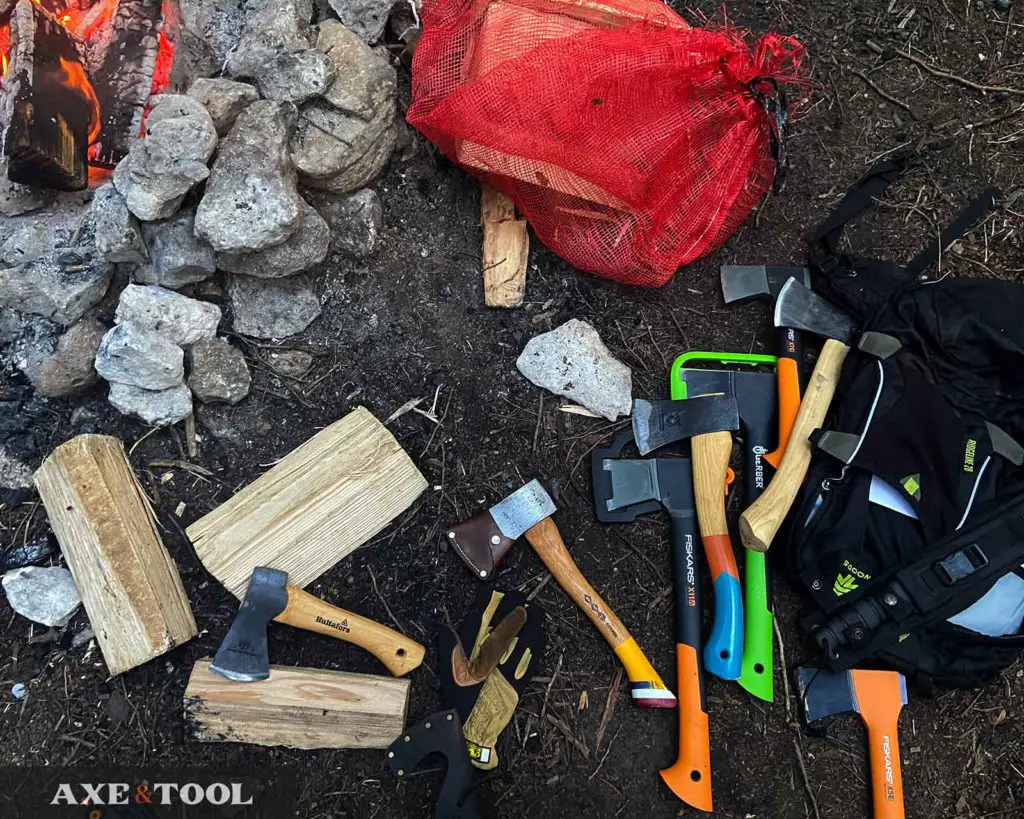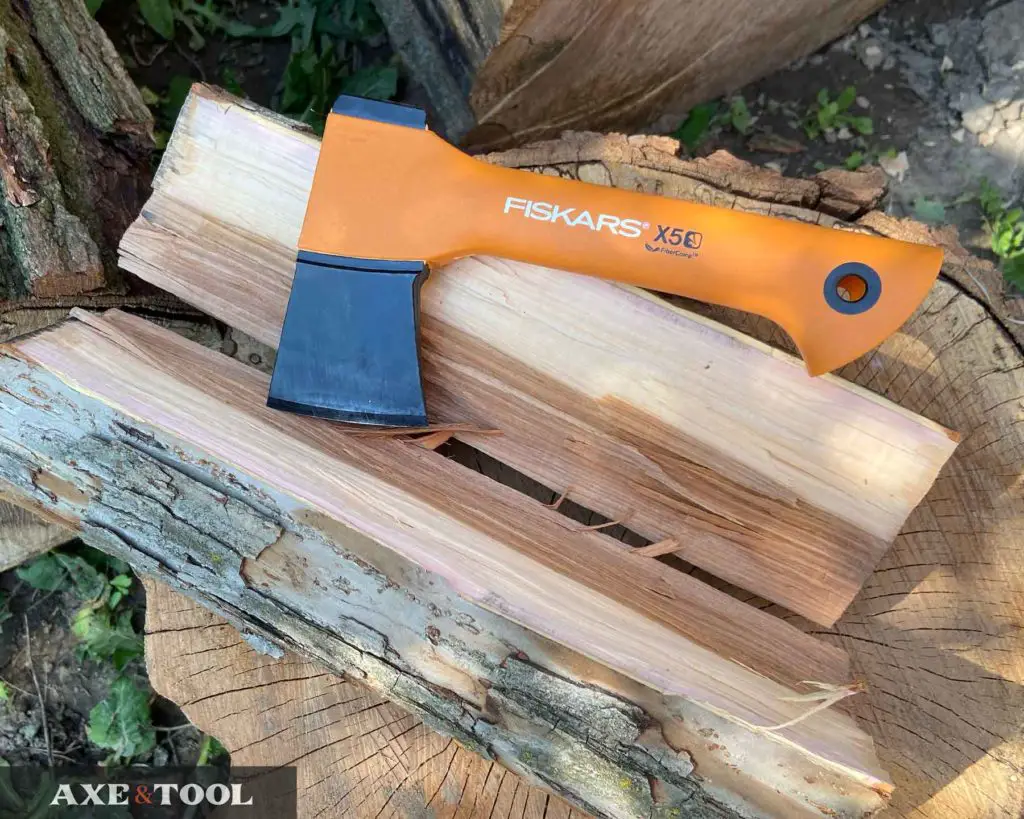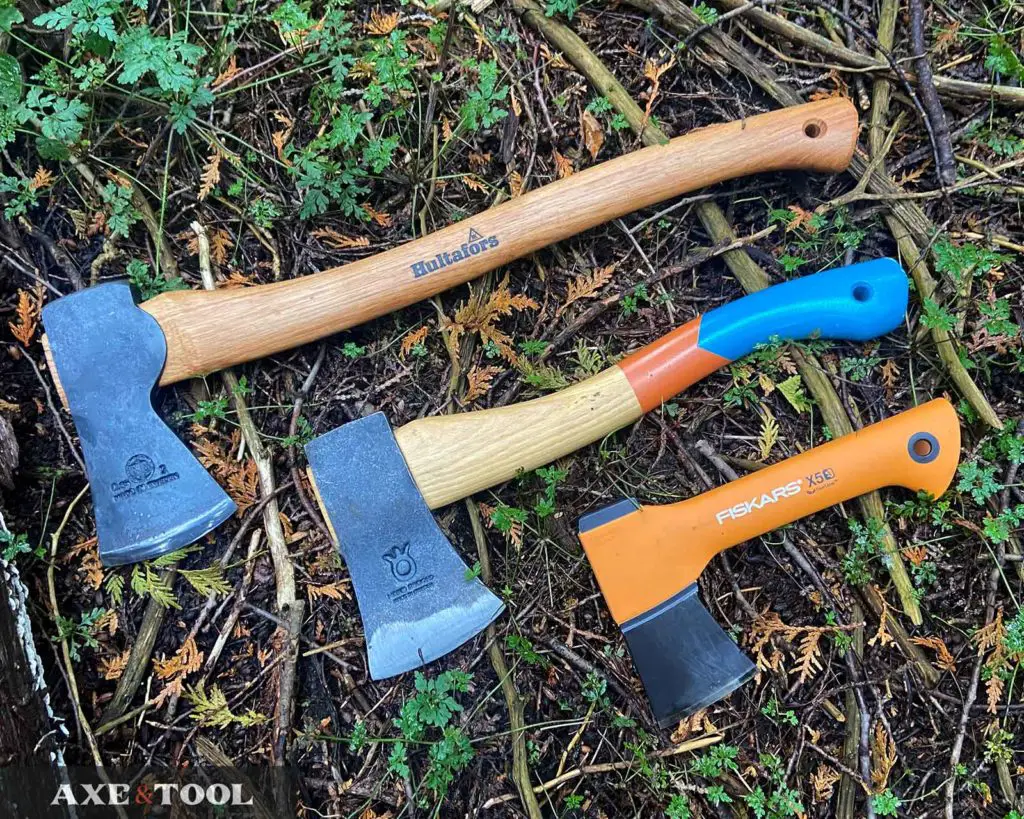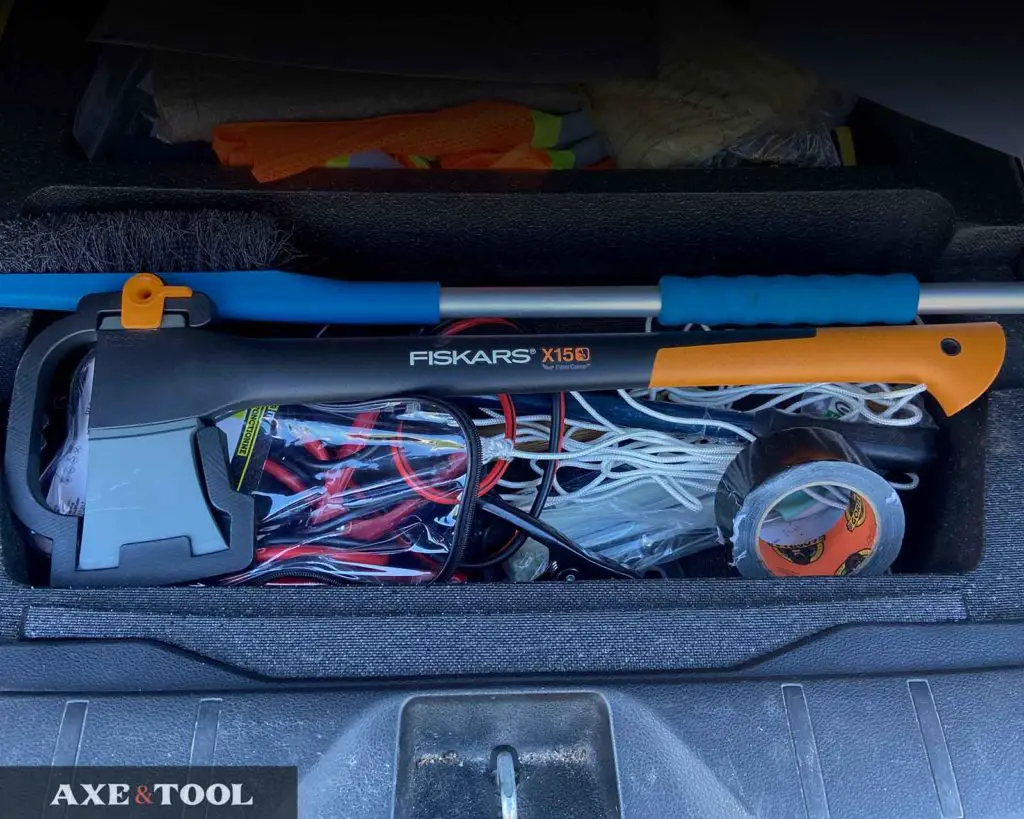Axe or Hatchet: What’s Best For Camping? (explained)

I have gone camping every year since I was a boy. Over the years I tried many different axes and hatchets, but these days I only bring a hatchet for the campsite.
A 13”- 17” hatchet is better than an axe for camping. Hatchets are best at camp tasks like splitting kindling, carving, and hammering pegs. But the hatchet design will impact which camp tasks it’s best for. An axe is for processing logs or large volumes of wood and is overkill when camping.
Why a hatchet is the best for camping
When you are going camping you aren’t chopping down trees or splitting large logs into firewood. You are doing smaller tasks, and an axe would be overkill.
Campsite firewood is pre-cut
Campgrounds sell bagged firewood which a hatchet can easily split or break down into kindling and tinder. The wood will be dried and split down into usable log sizes already.
You only need the hatchet to break those pieces down into smaller kindling and tinder to get the fire started. After that is done you can usually just use the firewood straight from the bag.
You can usually even get by without a hatchet when camping. They sell bags of kindling which you can turn into tinder with just a knife – but where is the fun in that?
Why pay for extra kindling when you can buy a good hatchet once? It will last for years, and splitting a bit of wood is part of the experience.

Hatchets can be used for camp craft
There are always fun activities that a hatchet can be useful for as well. Choking up on the grip will allow you to carve and make detailed cuts. This can be used to shape things like tent pegs or cooksticks.
You may need to do a little sharpening to make your hatchet suitable for this kind of craft. Affordable axes don’t have the sharpest edges, but that’s part of owning an axe.
An axe can be used this way as well – but fine tasks are tougher with the heavier head and long handle. So doable, but not ideal.
Some hatchets even have a hardened pole (back of the head) which can be used as a hammer.
Note: While any hatchet can hammer a wood peg into the earth, most shouldn’t be used as a hammer. The backside of the head is typically not hardened and can be damaged.
Being prepared in the wilderness
It never hurts to be prepared for the unexpected when out in the woods. I’m giving hatchets the advantage because they can be carried with you anywhere in a day pack.
A hatchet will be limited in the size of the tree/log it can handle effectively, but it can be used one-handed if someone is injured off the trail (and that can happen).
An axe will be better to clear fallen trees off the road or something like that, but those are not as serious a problem as something goes wrong while hiking.
Hatchet vs Mini-hatchet for camping

A few axe companies like Fiskars and Hults Bruk make “mini-hatchets” that use a standard hatchet head on a compact handle (about 9.5″). I own a couple and they are pretty neat little axes.
Mini-hatchets are handy for light chopping, carving, and are even capable of splitting campsite firewood. But splitting with the short handle adds a risk of hitting your knuckles and makes it tough to pry wood apart if it doesn’t fully split on the first strike.
Because splitting firewood is almost always the primary task when camping,I recommend bringing a full-size hatchet.
Even for backpacking (if you are going to bring a hatchet) it might as well be full size. The difference in weight between a 14” handle and 9.5” is only a couple of ounces. So unless the smaller size is critical – I think it’s worth the extra size/weight for the extra capability.
Note: Avoid the little pack axes that have thin flat heads (like the Gerber pack axe). Those are more like an axe-shaped knife and don’t work as well for anything except maybe carving.
Hatchets vs small axes for camping

Small axes are very popular, especially with the bushcraft crowd. They are generally 18-21” long with a slightly larger head than a hatchet (1.5–2lbs). They have the versatility of being used one or two-handed, giving the user more capabilities.
These axes are great on a campsite, especially if you want to learn more Bushcraft skills. The little bit of extra weight and length adds a lot of power and makes splitting easier compared to a hatchet.
However, it’s these axes are not a requirement. Most of the time camping you don’t need the extra capability.
Warning: With the wrong technique a short axe can easily ricochet and catch your foot or shin. Hatchets tend to be used kneeling or low to the ground so you only have to watch your hands.
The popular models (Gransfors Bruk and Hults Bruk) are in the $150-$200 price range, but there are a few affordable options.
When you might want an axe camping
You shouldn’t need a full-size axe when camping, but you might want to keep one in your vehicle if you are doing a large road trip or traveling to far-our remote areas.
I mentioned the emergency idea earlier. I keep a compact axe (Fiskars X15) in the trunk for when we are driving long distances and through remote areas. It has a larger head capable of chopping fallen trees, but on a compact 23.5″ handle.
It’s stored above the spare tire in the trunk, ready for emergencies. But, I still bring a separate hatchet for the campsite.

Choosing a camp hatchet
If you are new to axes or camping, don’t start with an expensive hatchet. You should learn some of the skills with a good but affordable option. It’s painful to chip an edge or overstrike the handle on a $150 axe (I’ve done both).
Avoid the cheap hardware store or amazon hatchets. Twice I have seen one break on the first swing (and others that didn’t last much longer).
I have a full article on how to choose the right camp hatchet, which explains things like handle material and head shape.
But the hatchets below are what I typically recommend for people getting into camping, or axes. They all have proven track records as good axes, and are reasonably priced.
Recommended hatchets for camping

| Hatchet | Notes: |
| Husqvarna 13″ (wood) | I consider this a “standard” hatchet. It has a simple head that’s not too thick and not too thin. It’s hand forged and comes with a sheath. They come quickly hand “sharpened”, so aren’t razor-sharp – but they are usable, and a decent splitter of firewood. They call it a 13″ hatchet, but it’s actually 15″ OAL. |
| Fiskars X7 | This axe is cheap, comes sharp, and splits well – but the best part is you don’t really have to care about them. The composite handle means you can leave it in your car year-round if you want, and use the handle to pry apart stubborn wood. |
| Council Tool Flying Fox | This is my favorite hatchet of the 3, and it would be my choice for anyone who plans on using their hatchet for camp craft. It’s got a slender 16″ handle, a long thin cutting edge, and a hardened pole (back of the head) so it can be used for hammering. But doesn’t come with a sheath. |
| Fiskars X11 | I consider this a “standard” hatchet. It has a simple head that’s not too thick and not too thin. It’s hand-forged and comes with a sheath. They come quickly hand “sharpened”, so aren’t razor-sharp – but they are usable, and a decent splitter of firewood. They call it a 13″ hatchet, but it’s actually 15″ OAL. |
Please comment below If I missed something or if you have any questions. I do my best to respond to everyone.
About the author:
About the author:
Jim Bell | Site Creator
I’m just a guy who likes axes. I got tired of only finding crap websites, so I set out to build a better one myself.
I’m also on Instagram: @axeandtool



You didn’t mention the Estwing. What about that one?
There are more I should add too. The Estwing is fine, but I don’t love it. I took it out camping for more testing this summer, and kept switching back to other hatchets. It’s very good at shaving tinder to start the fire, and can split smaller pieces fine. But the head was too thin and light to punch through some of the bigger pieces of seasoned campsite firewood.
What are your thoughts on the Coleman Camp Axe for beginners? Would this be a good choice vice the ones you listed in your article and if not why? Thanks
I haven’t actually used the Coleman, so I can’t speak from direct experience. But the fact it’s only $10-$12 USD says a lot. I worry about the how the head is attached. But for that price, there is nothing wrong with giving it a shot and seeing what you think. Then you can always replace it if something happens or it sucks.
If you are really focused on a high value entry point, I have had a good experience with my little Lexivon (see review). You could try the larger 14″ version – I think they are about $25. But to me, something like a Fiskars or Estwing will certainly last you years and likely provide a better steel to learn things like sharpening on.
Hope this helps